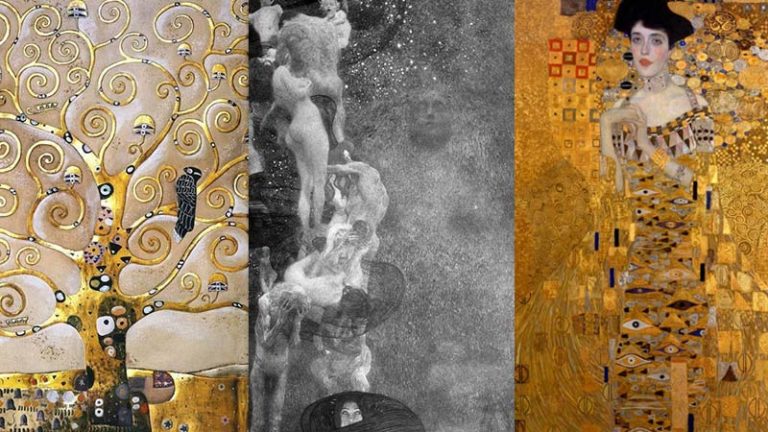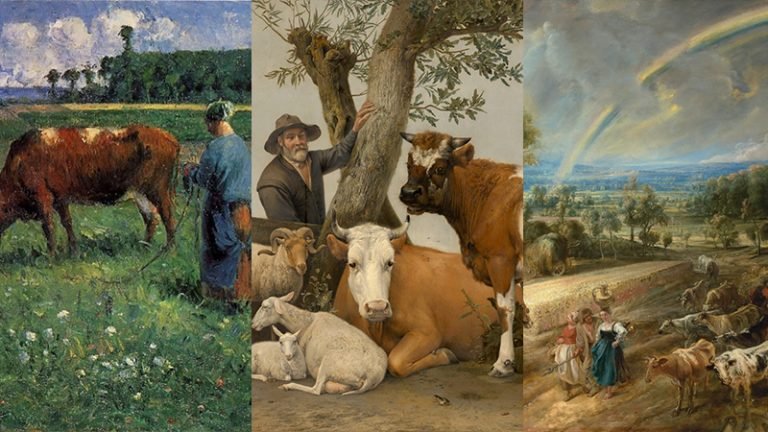
Throughout history, war has shaped societies and inspired countless artists to capture its essence on canvas.
From the brutality of battle to the valor of heroes, these powerful images tell stories that resonate across generations.
Iconic works like Pablo Picasso’s Guernica and Francisco Goya’s The Third of May 1808 stand as poignant reminders of the human cost of conflict.
In this exploration of ten famous battle paintings, we delve into masterpieces that not only document historical events but also evoke deep emotional responses.
Each artwork reflects the artist’s perspective, offering a unique lens through which to understand the complexities of war.
Join in as we uncover the significance of these renowned pieces and their lasting impact on art and culture.
1. The Battle of San Romano – Paolo Uccello

“The Battle of San Romano,” completed in 1432 by Paolo Uccello, celebrates Florence’s victory over Sienese forces.
This triptych features three panels, each over 3 meters long, showcasing the intense confrontation with remarkable detail.
Uccello’s use of linear perspective enhances the dramatic action, illustrating the heroic efforts of Da Tolentino as he unseats the opposing commander.
The painting remains a rare example of large-scale secular art from the early Renaissance, emphasizing the artistry and narrative depth inherent in wartime depictions.
2. The Surrender of Breda – Diego Velázquez

The Surrender of Breda, painted by Diego Velázquez between 1634 and 1635, depicts one of Spain’s rare victories in the Eighty Years’ War.
Velázquez captures the poignant exchange of keys between Dutch leader Justinus van Nassau and Spanish general Ambrogio Spinola, emphasizing reconciliation over conflict.
The artist’s attention to detail and historical accuracy makes this oil on canvas one of his finest works, showcasing both the strength of the Spanish military and the humanity of its soldiers.
3. The Revolt of Cairo – Anne-Louis Girodet de Roussy-Trioson

The Revolt of Cairo, painted by Anne-Louis Girodet de Roussy-Trioson, captures the tumultuous uprising against French occupation in 1798.
This neoclassical artwork portrays the chaos of the rebellion with striking emotional intensity. Girodet didn’t focus on historical accuracy; instead, he offered an orientalist perspective that highlights the drama and violence of the event.
By commemorating the uprising, this painting serves as a powerful reminder of the struggle for autonomy during a transformative period in Egyptian history.
4. Battle of Cesme at Night – Ivan Aivazovsky

Aivazovsky’s “Battle of Cesme at Night,” completed in 1848, powerfully illustrates the devastation of naval combat.
He uses light and color to create an urgent atmosphere, depicting ships engulfed in flames while soldiers fight for survival. This artwork exemplifies his prowess as a seascape artist, capturing the intensity and scale of battle.
Through dramatic contrasts, Aivazovsky conveys both the chaos of warfare and the tragic beauty found within its ferocity.
5. The Battle of Trafalgar – J. M. W. Turner

The “Battle of Trafalgar,” painted by J. M. W. Turner in 1822, showcases the ferocity of naval combat on October 21, 1805.
This masterpiece, measuring 2615 mm by 3685 mm, captures the intense clash between British and French fleets.
Turner’s dramatic lighting and vibrant palette emphasize the chaos of battle, reflecting the naval victory that solidified British maritime dominance.
Commissioned by King George IV for St. James’s Palace, it now resides in the National Maritime Museum in London, where it continues to inspire awe.
6. The Battle of the Kearsarge and the Alabama – Édouard Manet

Édouard Manet’s “The Battle of the Kearsarge and the Alabama” is a striking tribute to the 1864 naval conflict between the USS Kearsarge and the CSS Alabama.
Created based on press accounts, this artwork showcases Manet’s fascination with water and light, emphasizing the sea’s dominance over the actual battle.
The painting, completed in less than a month after the event, captures the Union’s victory and the tragic fate of the Confederate raider, reflecting the turmoil of the American Civil War.
7. The Battle of Alexander at Issus – Albrecht Altdorfer

Albrecht Altdorfer’s The Battle of Alexander at Issus, completed in 1529, vividly captures Alexander the Great’s victory over Darius III of Persia in 333 BC.
This masterpiece, known for its extraordinary landscape depiction, uses diagonal lines to create a dynamic sense of movement and depth.
Bright colors enhance the emotional intensity, illustrating both the chaos of battle and the grandeur of the scenery.
Its unique portrait orientation distinguishes it among typical war paintings, solidifying its status as Altdorfer’s magnum opus.
8. The Death of Major Peirson – John Singleton Copley

Copley’s painting, completed in 1783, commemorates Major Francis Peirson’s death during the British defense of Jersey in 1781.
Copley captures the dramatic moment when Peirson is shot by a French sniper, emphasizing the chaos of battle. Copley showcases a black soldier, identified as Peirson’s servant, returning fire, highlighting the heroism and sacrifice present.
This work elevated a minor skirmish into a celebrated episode of British military history, resonating with national pride amidst the ongoing Revolutionary War.
9. The Death of General Wolfe – Benjamin West

Benjamin West’s “The Death of General Wolfe,” completed in 1770, portrays the British General James Wolfe’s death during the 1759 Battle of Quebec.
West presents Wolfe as a Christlike figure, surrounded by his officers in a triangular composition. The painting, despite historical inaccuracies regarding Wolfe’s demise, has become a significant neoclassical work.
Illustrating depth and emotion, it reflects the deep reverence for sacrifice in war, highlighting both the heroism of Wolfe and the collective mourning of his comrades.
10. Napoleon Crossing the Alps – Jacques-Louis David

Jacques-Louis David’s “Napoleon Crossing the Alps,” completed in 1805, dramatically illustrates the military leader’s audacious journey through the treacherous Alps.
It showcases Napoleon on a majestic steed, exuding power and determination. David masterfully uses bold colors and dynamic composition to capture the intensity of the moment, symbolizing the strength and charisma that defined Napoleon’s reign.
The painting became iconic, reinforcing Napoleon’s image as a formidable figure in history and a master of military strategy.






